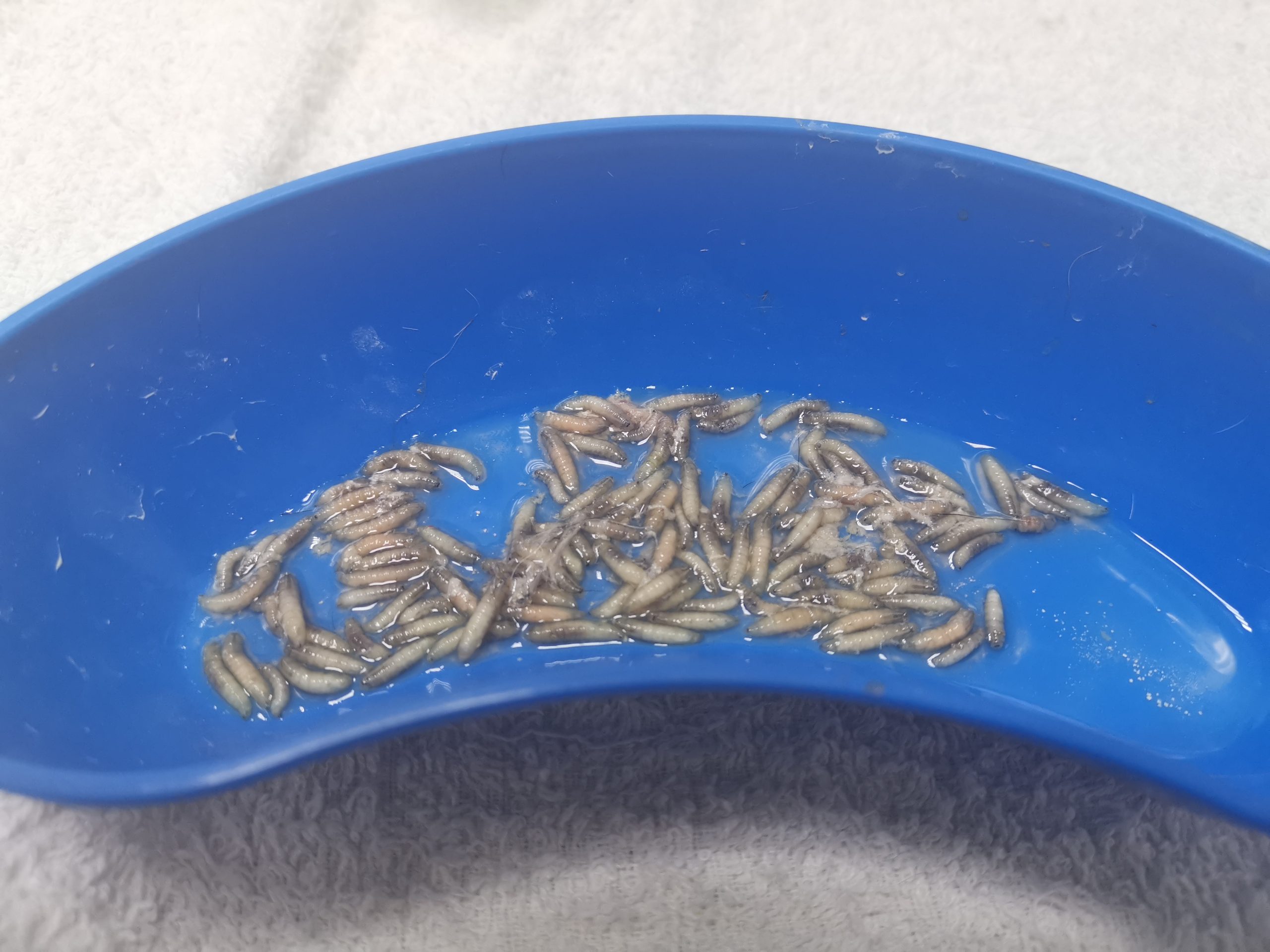Maggot Wound in Dogs
You may have just found out that your dog has maggots. These parasites can cause many problems for your dog. This article will explain what maggots are and what you can do to help your dog get rid of these unwanted parasites.
What are Maggots ?

Maggot wounds retrieved from a dog’s ears
Causes of Maggots in Dogs
Maggots are caused when the female fly lays an egg in an infected wound on the skin. These wounds are usually damp or constant soiled by urine or faces. These are more likely to occur in warmer months in hot and humid environments. Most dogs who have maggots are always dirty, seriously injured or have a mobility problems. If your dog has a constant skin infection or allergies they will also have an increased risk of maggots.
How do Maggots infest animals?
Flies are attracted to garbage, rotting food, open wounds and faeces. They use these places as substrate to lay their eggs. If the fly lays its eggs on fresh or open wounds on your dog, that can easily cause maggot infestation. Your dog may have these wounds because of a fight, itching, licking, or other injury. Even a wound the size of a pin tip can be enough for a fly to lay its eggs on. If your dog can easily reach with his tongue, they are usually licked off. Dangerous areas for your dog where maggot infestations can commonly occur are the ears, head and neck, back of the body, anus.
Once these eggs are laid on the wound site of your dog they can hatch within a few hours.The larvae stage is called maggots.These will start out very small just like a thin grain of rice but once they start to feed on the flesh and other organs of any animal they can grow fat and up to an inch long. They will also penetrate into the body of the animal increasing the size of the wound in no time. This attracts more flies to the site and even more eggs. This will cause a bigger maggot wound.
If left untreated, maggot wounds can be fatal as your dog may die due to the maggots tunnelling into the brain or other vital organs causing blood loss or a secondary infections.
Symptoms of Maggots in Dogs
The most visible sign of maggots is obvious. These small, white larva of a fly will be present in the wounds of your dog. Usually you will see them wriggling and moving. Sometimes your dog’s fur will hid the wound. Small white eggs can be seen on the fur of your animal. A dog with untreated maggots will have a foul, decaying smell. These maggots are secreting an enzyme that kill healthy skin tissues. In severe cases, a dog will lose their appetite and become lethargic and depressed.
How to Diagnosis Maggots in Dogs
Diagnosis of maggot is very easy. This can be easily seen in the wound. You may have to shave the area to get a better view and treat it. In some infestations, the wound will extend farther than it may seem due to the amount of dead tissue that the maggots are creating. Your veterinarian may culture the tissues to help to find out if any bacterial or fungus is also present in the wounds.
These flies will create a lump with a hole for them to breath out of in the skin as they grow. These holes are visible when the area is shaved. Occasionally the grub can be seen poking out.
Treatment of Maggots in Dogs
The main treatment of maggot is to remove all of the maggots or grubs. This is done by hand. This is a delicate and time consuming process. There can be many larvae that must be removed carefully. These maggots can release an enzymes that the maggot use to kill living tissue. This enzyme may be released in larger quantities if the maggots body is crushed or pulled apart during the removal. If large quantities are release your dog can have additional tissue death and even shock.
Usually the skin that has been killed by the maggots needs to be remove to help promote healing. Since the removal can be both delicate and painful many vets will do this under general anaesthesia. If any infection is uncovered, antibiotics or antifungals will be prescribed as necessary.
Recovery from Maggots in Dogs
Wounds from these infestations can take a while to heal. They will also need a lot of attention for proper healing. Your vet will make sure that your dog’s skin is re-growing correctly to prevent gangrene from developing. It is very common for infections to develop in these wounds. You need to make sure that you give all medications that your vet prescribed to help cure these infections.